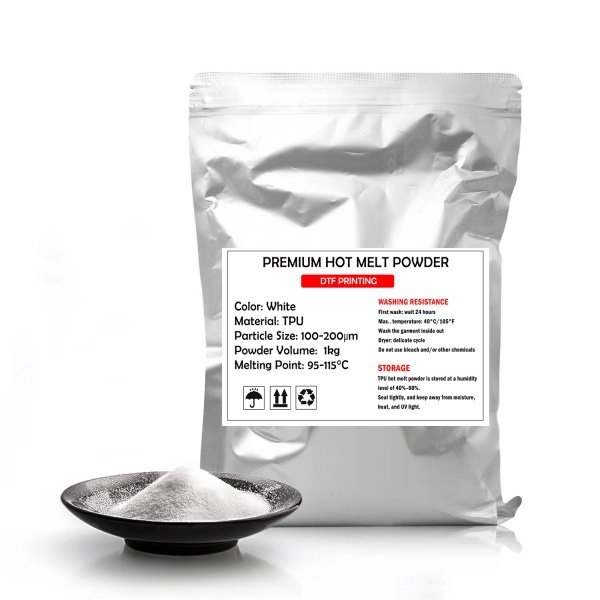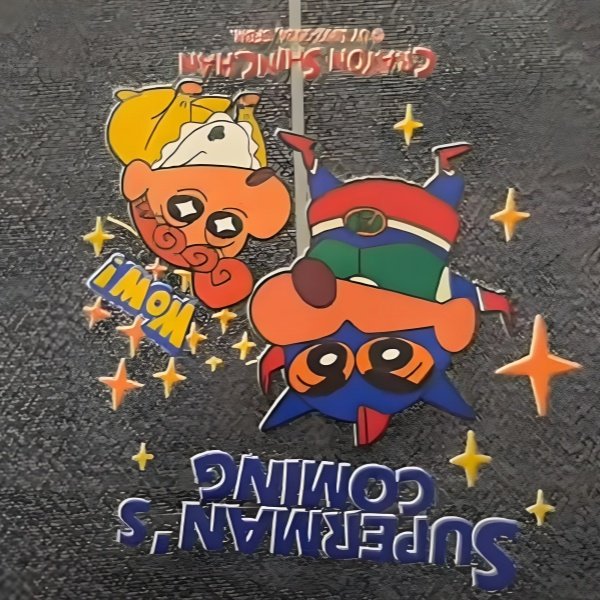Direct-to-Film (DTF) printing has revolutionized the garment decoration industry, offering vibrant, durable, and high-resolution prints. A key component of this process is DTF powder, which ensures the transfer adheres perfectly to fabrics.
If you’re searching for “What is DTF powder used for?” or “How long do you heat DTF powder?”, this guide covers everything—types, specifications, application techniques, and expert tips to help you achieve professional results.
By the end, you’ll understand:
✅ What DTF powder does
✅ Different types (colors, materials, thicknesses)
✅ Key specifications (melting point, grain size)
✅ Optimal heating time and temperature
✅ Pro tips for flawless transfers
Let’s dive in!
1. What Is DTF Powder For?
DTF powder (also called hot melt powder or adhesive powder) is a thermoplastic adhesive used in Direct-to-Film printing. It binds the printed design to fabric when heat-pressed, ensuring:
✔ Strong adhesion – Prevents cracking or peeling
✔ Soft hand feel – Doesn’t make the print stiff
✔ Wash durability – Survives multiple laundry cycles
How Does DTF Powder Work?
- Printing – A design is printed on PET film using DTF inks.
- Powder Application – DTF powder is sprinkled over the wet ink.
- Curing – Excess powder is removed, and the print is heat-pressed onto fabric.
Pro Tip: *The powder melts at a specific temperature (usually 95-160°C), creating a permanent bond.*
External Resource: DTF vs. DTG Printing – Which is Better?
2. Types of DTF Powder (Colors, Materials, Thicknesses)
Not all DTF powders are the same. Choosing the right one depends on:
- Fabric type (cotton, polyester, blends)
- Desired finish (matte, glossy, flexible)
- Application method (manual or automatic powder shaker)
Comparison Table: DTF Powder Types
| Type | Best For | Melting Point | Finish |
| White Powder | Light and dark fabrics | 120-140°C | Matte/Soft |
| Black Powder | Sublimation fabrics | 130-150°C | Matte |
| High-Temp Powder | Polyester | 150-160°C | Durable |
| Low-Temp Powder | Delicate fabrics | 110-130°C | Flexible |
Key Factors to Consider:
🔹 Grain Size – Fine (80-150 mesh) for detailed prints, coarse (100-170 mesh) for thicker layers.
🔹 Flexibility – Some powders remain soft after curing, ideal for stretchy fabrics.
🔹 Wash Resistance – High-quality powders survive 50+ washes.
Case Study: How Nike Uses DTF for Custom Sportswear
3. DTF Powder Specifications (Detailed Parameter Table)
To ensure the best results, check these technical specs before buying:
| Parameter | Ideal Range | Why It Matters |
| Melting Point | 110-160°C | Too high = fabric damage; too low = poor adhesion |
| Grain Size | 80-170 mesh | Affects powder distribution & detail |
| Curing Time | 15-30 sec | Ensures full adhesion without overheating |
| Wash Resistance | 50+ cycles | Determines print longevity |
| Flexibility | High (for stretch fabrics) | Prevents cracking |
Expert Tip: Always test a small batch before large-scale production.
Further Reading: How to Choose the Best DTF Powder
4. How Long Do You Heat DTF Powder?
The heating time and temperature vary based on:
- Powder type (low-temp vs. high-temp)
- Fabric material (cotton, polyester, blends)
- Press type (clamshell vs. swing-away)
Recommended Heat Press Settings
| Fabric Type | Temperature | Time | Pressure |
| Cotton | 150°C (302°F) | 15 sec | Medium |
| Polyester | 140°C (284°F) | 12 sec | Light |
| Blends | 145°C (293°F) | 14 sec | Medium |
| Stretchy Fabrics | 140°C (284°F) | 10 sec | Light |
Common Mistakes to Avoid:
❌ Overheating – Causes yellowing or fabric damage.
❌ Insufficient Pressure – Leads to weak adhesion.
❌ Uneven Application – Results in patchy transfers.
Pro Tip: Use an infrared thermometer to verify platen temperature.
Video Guide: DTF Powder Heating Demonstration
5. Frequently Asked Questions (FAQ)
Q: Can DTF powder be used on dark fabrics?
✅ Yes! DTF powder works best for dark textiles.
Q: How do I store DTF powder?
🌡 Store in a cool, dry place (humidity can ruin powder quality).
Q: Is DTF powder eco-friendly?
♻ Most powders are non-toxic, but check for MSDS and OEKO certification.
Q: Can I reuse excess DTF powder?
🔄 Yes, but sieve it first to remove clumps.
6. Why DTF Powder is a Game-Changer
DTF powder enables the creation of high-quality, durable transfers on almost any fabric. Whether you’re into custom apparel, sportswear, or promotional merch, choosing the right powder ensures:
✔ Vibrant, long-lasting prints
✔ Soft, comfortable feel
✔ Cost-effective production
Ready to upgrade your DTF printing? Shop premium DTF powder now!


